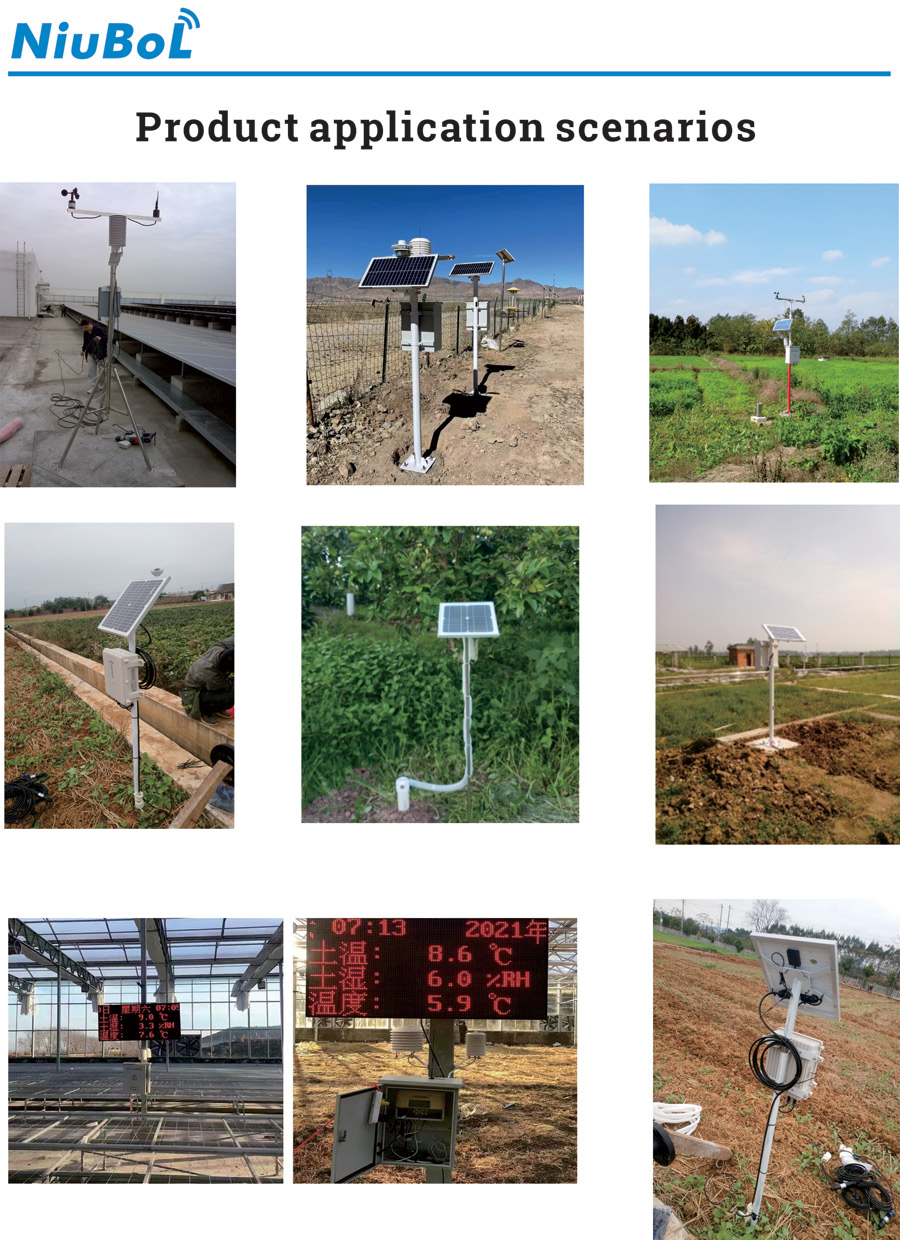

— Blogs —
—Products—
 Consumer hotline +8618073152920
Consumer hotline +8618073152920 WhatsApp:+8615367865107
Address:Room 102, District D, Houhu Industrial Park, Yuelu District, Changsha City, Hunan Province, China
Product knowledge
Time:2024-04-12 14:17:00 Popularity:1654
Soil sensor data often needs to be used in conjunction with other climate data to more fully understand and assess crop water needs and environmental conditions. Here are some reasons why and how:
1. More comprehensive climate:
While soil sensor data typically focuses on soil moisture, climate data provides a broader perspective, including temperature, precipitation, wind speed, hours of sunshine, and more.
Combining these data can help create a more comprehensive picture of the climate, leading to more accurate predictions of crop water needs.
2. Climate patterns and trends:
Long-term climate data can reveal specific climate patterns and trends that are important for long-term irrigation planning and crop management.
Understanding past climate patterns can help farmers predict future climate conditions and adjust irrigation strategies accordingly.
3. Real-time decision support:
Combining real-time climate data with soil moisture sensor data can help farmers make timely irrigation decisions.
For example, if temperatures increase and precipitation decreases, crops may need more water, and the combination of sensor data and climate data can help determine the best time to irrigate.
4. Crop modelling and simulation:
Crop models often use climate data as input to simulate crop growth and water requirements.
Combining sensor data and climate data can improve the accuracy and usefulness of crop models.
5. Risk management:
Understanding climate data can help farmers manage irrigation risks, such as drought or flooding.
By predicting the impacts of climate change, farmers can take steps to reduce potential losses.
6. Adaptation and sustainability:
With the effects of climate change, combining sensor data and other climate data can help farmers adapt to new climate conditions and adopt sustainable irrigation practices.

Ways to combine agricultural sensor data and other climate data may include:
Data integration platforms: using integrated data management systems that bring together data from different sources on a single platform for easy analysis and decision-making.
Specialised software: using specially designed software which can receive and process data from different sensors and combine it with climate data.
Model integration: Inputting sensor data into crop growth models or hydrological models to simulate crop water requirements and soil moisture dynamics.
In summary, combining soil sensor data with other climate data can provide more comprehensive and accurate decision support for irrigation and management, helping to improve water use efficiency, protect the environment, and ensure sustainable crop production.
Prev:Optimizing irrigation strategies: integrating crop needs with environmental factors
Next:Adjusting irrigation strategies based on soil moisture sensor
Related recommendations
Sensors & Weather Stations Catalog
Agriculture Sensors and Weather Stations Catalog-NiuBoL.pdf
Weather Stations Catalog-NiuBoL.pdf
Related products
 Combined air temperature and relative humidity sensor
Combined air temperature and relative humidity sensor Soil Moisture Temperature sensor for irrigation
Soil Moisture Temperature sensor for irrigation Soil pH sensor RS485 soil Testing instrument soil ph meter for agriculture
Soil pH sensor RS485 soil Testing instrument soil ph meter for agriculture Wind Speed sensor Output Modbus/RS485/Analog/0-5V/4-20mA
Wind Speed sensor Output Modbus/RS485/Analog/0-5V/4-20mA Tipping bucket rain gauge for weather monitoring auto rainfall sensor RS485/Outdoor/stainless steel
Tipping bucket rain gauge for weather monitoring auto rainfall sensor RS485/Outdoor/stainless steel Pyranometer Solar Radiation Sensor 4-20mA/RS485
Pyranometer Solar Radiation Sensor 4-20mA/RS485
Screenshot, WhatsApp to identify the QR code
WhatsApp number:+8615367865107
(Click on WhatsApp to copy and add friends)
